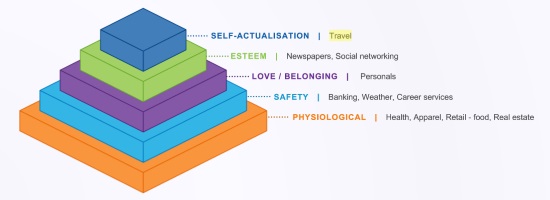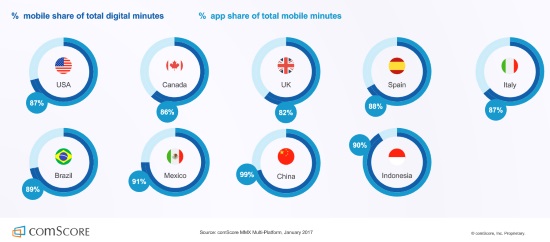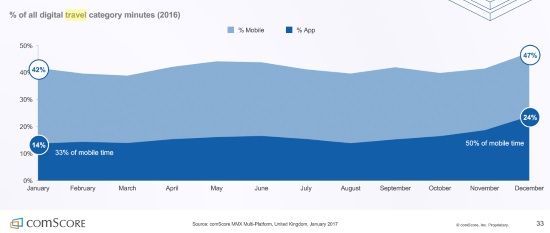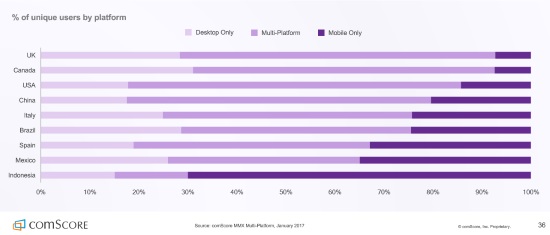
Mobile, human psychology, digital omnivores and travel
By cameron in Uncategorized
ComScore has reworked a 1940s academic theory into human psychology to structure a report about what consumers in nine markets want from their smartphones and apps, identifying travel with humankind’s need for self-actualisation.
Maslow’s “hierarchy of needs” first appeared in 1943 and formed part of the American academic’s ongoing research into human motivation. ComScore’s paper is titled “Mobile’s Hierarchy of Needs” and attempts to correlate industries which have a strong mobile footprint to the original theoretical ranking of human requirements.
 (Click on the image to see a larger version in a new window)
(Click on the image to see a larger version in a new window)
Many established academic theories have their doubters, and some of the connections made by ComScore are tenuous. However, leaving aside conversations about whether travel apps satisfy our need for self-actualisation – “the realisation of a person’s potential [which can] involve artistic pursuits, or achievement of aspirational desires” – the paper does include some fresh data into generic and travel-specific mobile use, while drilling down in market-specific trends.
Mobile continues to increase its share of digital use at the expense of desktop, with the paper also highlighting how prevalent app use is over mobile web.
 (Click on the image to see a larger version in a new window)
(Click on the image to see a larger version in a new window)
However, despite the dominance of mobile in terms of time spent, there is still what ComScore calls an “mcommerce gap.” Travel is not singled out as having a bigger or smaller gap than the other industries but the five main reasons which deter mobile users from becoming mobile bookers or buyers are familiar.
They are:
- security concerns
- difficulty in navigating
- difficulty in seeing the product details
- difficulty with inputting the details needed to complete a purchase
- inability to browse and compare across multiple screens
ComScore suggests the mcommerce gap can be closed by “building trust and a seamless user experience, with easy access to relevant information” which is doesn’t help much – the question that need answering is how to build that trust.
Although the paper doesn’t make the connection directly, one way of building trust in transacting via an app could be via customer service using “non-standard channels such as instant messaging and video chat”.
Conversion rates is a term which travel firms obsessed about in the desktop days but which is less talked about today. In the UK, comScore tracked a big hike in travel app use during 2016 – at the start of the year apps accounted one-third of travel’s mobile minutes – by the end the split between apps and mobile web was 50/50.
 (Click on the image to see a larger version in a new window)
(Click on the image to see a larger version in a new window)
Cracking the app conversion gap – acommerce anyone? – needs to be added to the ever-growing to-do list.
Having said all that, perhaps the most relevant detail in a paper, which is subtitled “how mobile evolved as the primary tool for the digital omnivore”, is that mobile might be the primary tool but it not the only tool.
 (Click on the image to see a larger version in a new window)
(Click on the image to see a larger version in a new window)
This shows that most users in most markets are still accessing the web using multiple devices. This could change over time and with regional differences, but for now, it looks as if reports of the death of desktop have been greatly exaggerated.
Click here to access the report in full.
![]()

